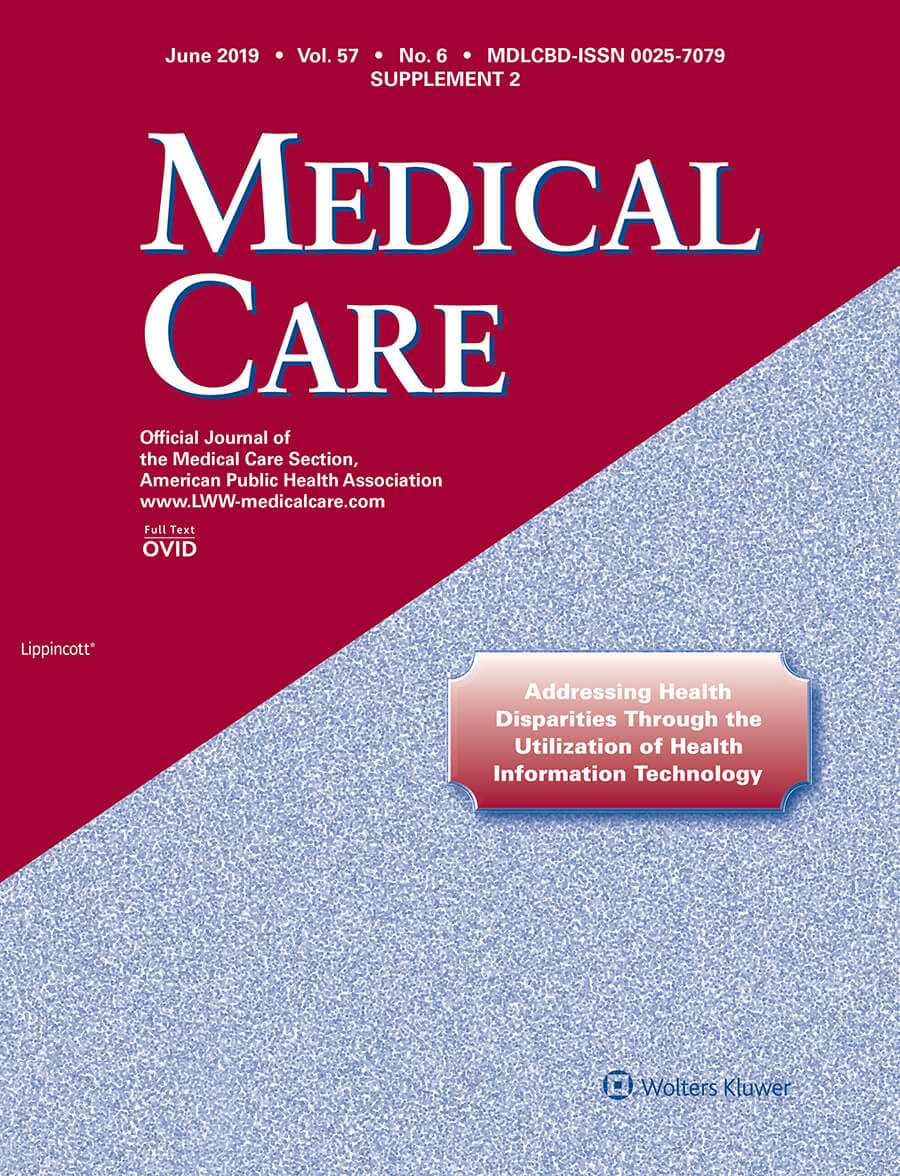 Disparities in health care delivery and health outcomes present distressing challenges to populations who often experience a greater burden of chronic diseases and are more likely to show signs of poor disease management. Health information technology (IT) tools may serve a vital role in reducing such disparities in the clinical care setting. In the Medical Care June supplement, "Addressing Health Disparities Through the Utilization of Health Information Technology," authors discuss the potential application of health IT in reducing disparities by increasing access to care, improving quality of healthcare and by promoting better patient-clinician communication.
Disparities in health care delivery and health outcomes present distressing challenges to populations who often experience a greater burden of chronic diseases and are more likely to show signs of poor disease management. Health information technology (IT) tools may serve a vital role in reducing such disparities in the clinical care setting. In the Medical Care June supplement, "Addressing Health Disparities Through the Utilization of Health Information Technology," authors discuss the potential application of health IT in reducing disparities by increasing access to care, improving quality of healthcare and by promoting better patient-clinician communication.
Within the supplement are 12 original research papers and five editorials and commentaries. The research manuscripts report on the use of health information technologies (e.g., electronic health records, personal health records, e-prescribing, mobile technologies) to reduce disparities in health care access and outcomes. The commentaries provide expert insights on the role of health IT in promoting health for all racial and ethnic populations, rural and urban populations, socioeconomically disadvantaged populations, and sexual minorities. This special supplement is sponsored by the National Institute on Minority Health and Health Disparities (NIMHD), part of the National Institutes of Health, with an introductory editorial led by NIMHD Director Eliseo J. Pérez-Stable, M.D., with NIMHD Health Scientist Administrator Beda Jean-Francois, Ph.D., and NIMHD Chief of Staff Courtney Ferrell Aklin, Ph.D.
Health IT may help medically underserved populations by enhancing patient engagement, improving implementation of clinical guidelines, promoting patient safety, and reducing adverse outcomes. Additionally, individuals with limited English proficiency and/or limited health literacy may benefit where health IT can enhance patient-clinician communication through language and literacy specific materials and visual aids.
Ultimately, health IT research and strategies, as discussed in the new supplement, may improve health outcomes for minority populations, reduce disparities and promote health for all patients in the United States. This important work will require the support of many more stakeholders and researchers invested in encouraging health for all.

